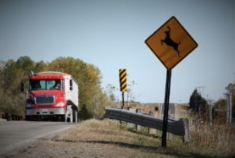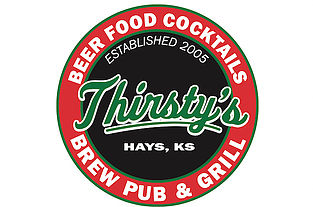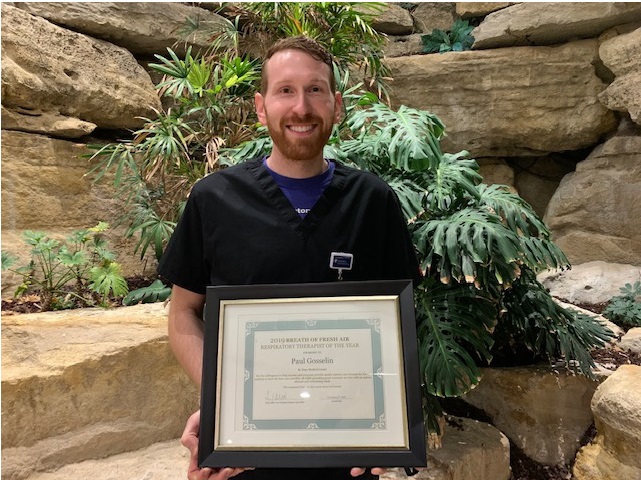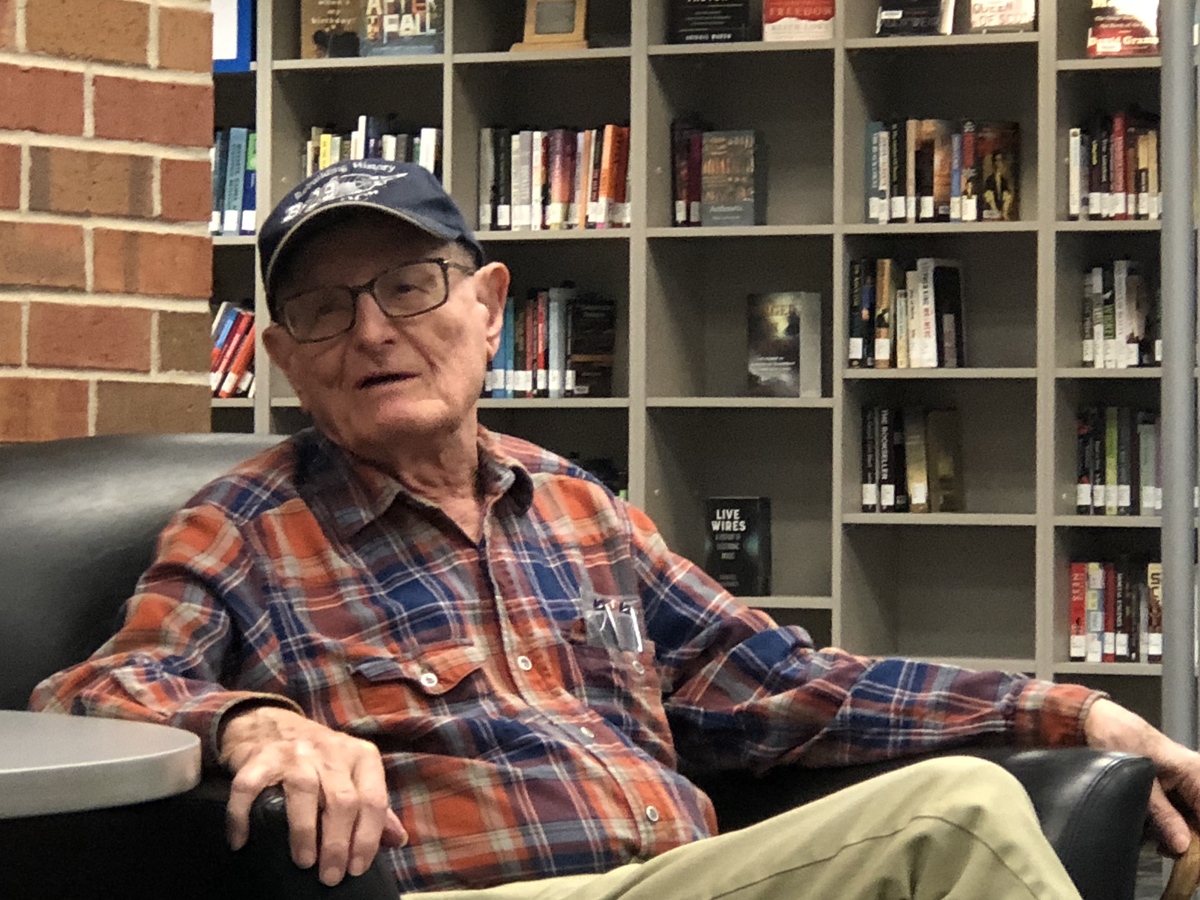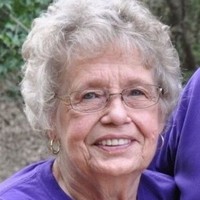Delivered to your virtual porch every morning — on time and free 🙂
Year: 2019
The Post Podcast: Holy Family Elementary gets ready for Gifts in a Jar fundraiser
Marla Gail (Long) Deines
 Marla Gail (Long) Deines was born on April 29, 1955, to James and Margaret (Schneider) Long in WaKeeney, Kansas.
Marla Gail (Long) Deines was born on April 29, 1955, to James and Margaret (Schneider) Long in WaKeeney, Kansas.
She attended WaKeeney public schools and was a 1973 graduate of Trego Community High School. As an alumna of Fort Hays State University, Marla received Bachelor’s Degrees in German, Spanish, and Psychology, and a Master’s Degree in ESL. She also studied abroad in Germany and Costa Rica, and taught ESL in China.
Marla married Stanley H. Deines on November 17, 1973, in WaKeeney, Kansas. Together, they had three sons: Joshua James, Lucas Herman and Eastin Stanley. Eastin Stanley preceded Marla in death.
Early married life consisted of many long days of work on the farm, as Marla could work cattle and drive combine with the best of them. Marla and Stan traveled many places across the United States to support their sons in their various sports activities. Those long road trips were filled with songs, laughter and pizza. To save a few bucks, they stayed in budget motels. The money saved was quickly spent on Lysol. The best times were family times.
Marla taught school for 30 years in the Ellis and Hays, Kansas public schools. While teaching, she received an Associate Degree in Parish Ministry and served as a minister at Prairie Faith Shared Ministry in Trego and Ellis Counties, Faith Lutheran in Osborne, and First Presbyterian in WaKeeney.
In 2015, Marla and Stan moved to Redondo Beach, California to retire and live near family, especially their beautiful grandchildren, Kai Eastin and Jamie Margaret. With boundless energy in retirement, Marla channeled her love for education and children as an instructional aide at Jefferson Elementary School and volunteered with Beach Cities Health District and Trinity Lutheran Church.
After her battle with metastatic breast cancer, Marla passed away peacefully at home on Monday, November 4, 2019. She is survived by her husband, Stanley; son Joshua and his wife, Belinda; son Lucas and his wife, Michelle; and two grandchildren, Kai and Jamie.
She loved being a teacher and a minister, a wife and a mother, but most of all, a grandmother. Marla, also known as “Gramms,” will be missed.
A memorial service will be held on Saturday, November 23, 2019, at 11:00 a.m. at Trinity Lutheran Church, 1340 11th Street, Manhattan Beach, California.
Kansas had 10-year high for deer-related crashes in 2018
TOPEKA, Kan. (AP) — The state transportation agency says Kansas hit a 10-year high for deer-related crashes last year.
The agency says 10,734 deer-related wrecks were reported in 2018 in Kansas. The Department of Transportation says that accounted for 16.5% of total wrecks for the year.
The department’s big game coordinator, Levi Jaster, said the increase in crashes is partly because of an increase in the deer population. Disease reduced the population beginning in 2008 until 2013, which is when the agency recorded the lowest number of deer-related wrecks in the past 10 years. The deer population has been increasing since then.
Three people died in deer-related accidents last year.
The highest number of deer-related wrecks in 2018 was in Sedgwick County, which had 418.
Fort Hays State University to host its eighth Kansas Startup Weekend
Fort Hays State University will host its eighth Kansas Startup from Friday to Sunday.
Led by the university’s W.R. and Yvonne Robbins College of Business and Entrepreneurship, Kansas Startup Weekend is an event designed for entrepreneurs to meet, share ideas, and launch new businesses. This three-day event, in the Robbins Center on the FHSU campus, is open to anyone, regardless of background, with a great idea and the desire to make that idea a reality.
Henry Schwaller, instructor of management and the founder of Kansas Startup, said the weekend “is a 48-hour, hands-on experience where anyone interested in starting a business can find out if their startup ideas are viable.”

“Beginning with open mic pitches on Friday, attendees bring their best ideas and inspire others to join their teams,” he said. “Saturday and Sunday focus on developing the business idea and building a viable product. On Sunday evening, teams demo their prototypes and receive valuable feedback from a panel of experts.”
FHSU hosted its first Kansas Startup in November 2013 and the response was overwhelmingly positive, said Schwaller. Over the first seven events, hundreds of aspiring entrepreneurs have participated in one of the largest entrepreneurial events in Kansas.
“Participants create working startups by collaborating with like-minded individuals outside of their daily networks,” said Schwaller.
The weekend focuses on action, innovation, and education. Whether the goal is to get feedback on an idea, meet a co-founder, develop specific skill sets, or create a team to help with a launch, Kansas Startup provides hands-on experience in which to test ideas and take the first steps towards launching new ventures.
On Friday evening, a successful local entrepreneur will welcome and challenge participants. On Saturday, a volunteer team of business, legal, and design coaches will provide assistance, advice and feedback to all participants.The event concludes on Sunday evening after participants present their business plans to a panel of judges.
Registration is required for participants. Presentations will be open to the public free of charge at 5 p.m. Sunday. Judging and awards begin at 7 p.m.
For additional information and registration, visit the Kansas Startup website: kansasstartup.com.
Five facts to know about Veterans Day
 Thank you, veterans for your service to our country!
Thank you, veterans for your service to our country!
As we celebrate your service, following are some facts to know about Veterans Day from the United States Department of Defense.
Veterans Day is a well-known American holiday, but there are also a few misconceptions about it — like how it’s spelled or whom exactly it celebrates. To clear some of that up, here are the important facts you should know.
Veterans Day does NOT have an apostrophe.
A lot of people think it’s “Veteran’s Day” or “Veterans’ Day,” but they’re wrong. The holiday is not a day that “belongs” to one veteran or multiple veterans, which is what an apostrophe implies. It’s a day for honoring all veterans — so no apostrophe needed.
Veterans Day is NOT the same as Memorial Day.
A lot of Americans get this confused, and we’ll be honest — it can be a little annoying to all of the living veterans out there.
Memorial Day is a time to remember those who gave their lives for our country, particularly in battle or from wounds they suffered in battle. Veterans Day honors all of those who have served the country in war or peace — dead or alive — although it’s largely intended to thank living veterans for their sacrifices.
It was originally called Armistice Day, commemorating the end of World War I.
World War I officially ended when the Treaty of Versailles was signed on June 28, 1919. However, the fighting ended about seven months before that when the Allies and Germany put into effect an armistice on the eleventh hour of the eleventh day of the eleventh month.
For that reason, Nov. 11, 1918, was largely considered the end of “the war to end all wars” and dubbed Armistice Day. In 1926, Congress officially recognized it as the end of the war, and in 1938, it became an official holiday, primarily a day set aside to honor veterans of World War I.
But then World War II and the Korean War happened, so on June 1, 1954, at the urging of veterans service organizations, Congress amended the commemoration yet again by changing the word “armistice” to “veterans” so the day would honor American veterans of all wars.
For a while, Veterans Day’s date was changed, too, and it confused everybody.
Congress signed the Uniform Holiday Bill in 1968 to ensure that a few federal holidays — Veterans Day included — would be celebrated on a Monday. Officials hoped it would spur travel and other family activities over a long weekend, which would stimulate the economy.
For some inexplicable reason, the bill set Veterans Day commemorations for the fourth Monday of every October.
On Oct. 25, 1971, the first Veterans Day under this new bill was held. We’re not sure why it took three years to implement, but not surprisingly, there was a lot of confusion about the change, and many states were unhappy, choosing to continue to recognize the day as they previously had — in November.
Within a few years, it became pretty apparent that most U.S. citizens wanted to celebrate Veterans Day on Nov. 11, since it was a matter of historic and patriotic significance. So on Sept. 20, 1975, President Gerald Ford signed another law (Public Law 94-97), which returned the annual observance to its original date starting in 1978.
Other countries celebrate it, too, in their own ways.
World War I was a multinational effort, so it makes sense that our allies also wanted to celebrate their veterans on Nov. 11. The name of the day and the types of commemorations differ, however.
Canada and Australia both call Nov. 11 “Remembrance Day.” Canada’s observance is pretty similar to our own, except many of its citizens wear red poppy flowers to honor their war dead. In Australia, the day is more akin to our Memorial Day.
Great Britain calls it “Remembrance Day,” too, but observes it on the Sunday closest to Nov. 11 with parades, services and two minutes of silence in London to honor those who lost their lives in war.
The above Veterans Day facts were written by Katie Lange for the U.S. Department of Defense website. (Nov. 5, 2018, https://www.defense.gov/explore/story/article/1675470/5-facts-to-know-about-veterans-day/)
Ellis Co. restaurant and lodging inspections, 11/04 – 11/10

Last week’s inspection results from the Kansas Department of Agriculture:
Dominos Pizza 2505 Vine, Hays – Nov. 6
A licensing inspection found three violations.
- In the three-door refrigerated prep table, there were three containers of opened alfredo sauce with dates of prepped 11/05/19 and discard 11/12/19.
- In the back storage area, there were five plastic food grade containers that were being stacked inside one another with sticker residue present along the outer parts of the containers.
- The marinara sauce taken out of cold holding at 10:30 a.m. and is good for eight hours per person in charge. Not marked with time removed from control as per variance.
2Matos 306 Dwight Dr., Hays – Nov. 5
A routine inspection found two violations.
- In the back prep area, there was an opened tub of tomato sauce that was being stored on the prep table at the temperature of 61 F. All other cold holding temperatures are in compliance.
- In the two-door Beverage Aire refrigerator, there was a container of tomato sauce with no date of when it was opened.
Dillons 1902 Vine St., Hays – Nov. 5
A routine inspection found nine violations.
- In the three-door cheese refrigerator, there was an opened container of Alouette Cheese Spread with no date of when it was opened.
- On the retail side of the establishment, there were one of four bags of King Arthur Flour with a deep crack along the side of the bag. Some of the flour was spilling out of the bag onto the shelf.
- In the meat walk-in cooler, there were four containers of raw sausage that were being stored on a solid shelf directly above eight packages of Beyond Burger Veggie Burger. No evidence of leaking was observed. In the meat walk-in cooler, there was a case of Bone-In Pork Spareribs that were being stored on a solid shelf directly next to a case of Brown Sugar Spiral Sliced Ham. No evidence of leaking was observed. On the retail side of the establishment, there were eight containers of raw shelled eggs being stored on a solid shelf directly next to nine packages of fully cooked hard-boiled eggs. No evidence of leaking was observed. In the dairy walk-in cooler, there was a case of pasteurized Liquid Eggs on the same solid shelf as several cases of raw shelled eggs. No evidence of leaking was observed.
- In the deli reach-in cooler, there was a container of PRSL Pepper Loaf that had an open date of 10/2/19 and a discard date of 11/14/19. There was also a Mac and Cheese loaf with an opened date of 10/05/19 and a discard date of 11/25/19.
- In the deli reach-in cooler, there was a package of Heritage Farms Virginia Smoked Ham that had an open date of 10/27/19. There was also a PRSL Meat Bologna opened on 10/26/19. Products were held over seven days.
- In the produce kitchen, the handwash sink hot water tested at 86 F.
- In the meat department, there was a hose with no backflow prevention device present that was hanging below the floor rim of the three-compartment sinks.
- In the back storage area shelves in between the grocery kitchen and bakeshop kitchen, there were three containers of liquid hand soap that was being stored on a solid shelf directly above 13 boxes of single-use gloves. The person in charge said that these gloves are used in direct contact with food. No evidence of leaking was observed. On an end cap in the northern section of the store, there were six cases of baby wipes that were being stored on a solid metal shelf directly above six cases of baby food. No evidence of leaking was observed.
- In the back storage area, there were several carts that had Glade Air Fresheners being stored directly above a box of Vegetable Snacks and Coconut Oil. On another cart, there was a case of Lysol Wipes being stored directly above a case of Texas Toast Croutons. On another cart, there were five cases of liquid laundry soap that was being stored directly on and next to two cases of liquid chocolate syrup. No evidence of leaking was observed.
Lincoln Elementary 1906 Ash, Hays – Nov. 5
A routine inspection found one violation.
- On the wire shelf above the handwashing station there was a mechanical vegetable slicer that had dried food residue present along the blade and push guard. The person in charge was unsure of the last time it was used.
Police: Hit and run driver injures two pedestrians, kills dog
KANSAS CITY (AP) — Kansas City police are searching for a hit-and-run driver who seriously injured two people and killed a dog that was walking with them.
Police say a 28-year-old man and 41-year-old woman were either riding a bicycle or standing alongside it when they were hit Sunday on a sidewalk near an intersection. The man was listed in critical condition, while the woman was in serious but stable condition. The dog died at the scene.
Police say the vehicle lost one of its front lights during the collision. No other details about the vehicle were released.
Thirsty’s Brew Pub and Grill honoring veterans with free meal
HaysMed associate receives Respiratory Therapist of the Year award

Paul Gosselin, respiratory therapist at HaysMed, part of The University of Kansas Health System, was recently named Respiratory Therapist of the Year.
Respiratory Services awards an annual Breath of Fresh Air award to recognize a respiratory therapist for their hard work and dedication.
The award winner is nominated and chosen by their peers and highlights an Associate in the respiratory therapy department who positively contributed the most teamwork and patient care during the year.
Gosselin has been with HaysMed since 2018.
World War II veteran makes a rare appearance in first-year seminar

By ANDREW MARTIN
Wichita State University
WICHITA — Richard Martin was only 18 years old when he was drafted into the Army Air Corps. Two years later, he spent the first part of his 21st birthday in the nose of a Boeing B-29 bomber over Japan.
Now he’s 94 years old and the last living member of his squadron. He walked across campus on his own, with only the help of a wooden cane and his son next to him.
On Wednesday, Nov. 6, the students of WSU 102 “Innovations of WWII” met him in the Ablah Library C-Space.
Now he is one of increasingly few remaining veterans of World War II, and the students had a rare opportunity to ask questions and listen to his stories.
Martin cheerfully answered questions ranging from his initial training in Miami Beach, Florida, to his long career as an accountant after the war.

At Miami Beach, Martin and many other basic trainees bunked in a four-story hotel repurposed as Army barracks.
“It even had an elevator, but they wouldn’t let us use it. We had to use the stairs all the time,” Martin said.
The Army placed him in the Air Corps, where he trained to be a bombardier. He deployed in 1944 with the creation of the 485th Bombardment Squadron.
The 485th was equipped with the B-29, which was one of the most advanced airplanes in the world at the time. Martin’s task was to aim the Nordon bomb sight, which was an early mechanical computer.
It was dangerous work. On one mission the airplane was chased by a “kamikaze” suicide aircraft that threatened to destroy the bomber. They turned hard and shook it off.
“That was the tightest turn I ever took in a B-29,” Martin said.

When a student asked him how he dealt with the stress of the bombing missions, he kept smiling.
“You just did it. I don’t think you ever thought about stress. You got to be real good friends with everybody because you depended on each other for your lives,” Martin said.
During another mission, a live bomb failed to drop. It was stuck in the bomb bay.
Martin and his best friend, the B-29’s radar operator, went into the bomb bay to dislodge it. When the bomb bay doors opened, 60 mph of cold wind in the black of night struck them.
“I told him, ‘I’ll say, one, two, three, kick.’ My buddy got excited and kicked on ‘three,’” Martin said.
He kicked into thin air.
The bomb dropped safely, but Martin would never forget the moment.
The 485th was among the last squadrons in combat during World War II. Near the end of a mission on Aug. 15, 1945, his radio operator had news for the crew.
The war was over.

The B-29s stopped dropping bombs, but the mission wasn’t over. The 485th parachuted thousands of pounds of food and supplies onto Allied POW camps.
It was a low-altitude mission, so Martin could see the POWs running toward the airplanes and the supplies with open arms.
When their supply mission ended, Martin finished his career as a bombardier. He became a mess hall supervisor on the ground.
“We had number 10 cans of peaches. I’m sure everybody got tired of peaches, but peaches were better than nothing,” Martin said.
Another student asked Martin if he still likes peaches.
He does.
Martin continued his education after the war and became an accountant. Years later, he sought out all of his crew members for reunions.
He found all of them except for his navigator. One of Martin’s family members was in the FBI, and he had them run a search on his navigator’s name.
Martin found out that his navigator lived in Sacramento, California. He gave his crew member a call.
“Why didn’t you find me sooner?” his navigator said.
“You’re lucky I found you at all,” Martin said.
Martin retired from accounting in 1983.
“I still do my own taxes, and my son’s too,” Martin said.
Martin is the last living member of the 485th, and he’s 94 years old.
Special thanks go to a number of people across WSU for this rare opportunity. Samantha Corcoran, assistant engineering educator, organized this meeting for her class. Sarah Butts, engineering, patents and trademark librarian, arranged to host us in Ablah Library. The C-Space and its wonderful staff provided a comfortable space for us to have this conversation. Most of all, many thanks go to Richard Martin and his family for their service and willingness to tell valuable stories that could easily be lost to history.

Karen Marlene Froetschner
 Karen Marlene Froetschner, 82, passed away November 9, 2019, at County Living of Larned.
Karen Marlene Froetschner, 82, passed away November 9, 2019, at County Living of Larned.
She was born March 26, 1937, to Hugh Francis and Mary Jane “Irene” Davidson Riegel at Dodge City. A lifetime area resident, she was a farmwife.
She was a member of the First Presbyterian Church, First Presbyterian Women, Gem Gals, Sunflower Red Hats, PVCH Auxiliary, and she was a community 4-H leader.
On November 29, 1958, she married Kyrle Froetschner at Belpre, he preceded her in death on April 19, 2019.
Survivors include two sons, Kraig (Amy) Froetschner, Larned and Kerry (Donna) Froetschner, Rozel; a sister, Sharon Wheeler, Augusta; two grandchildren: Chelsea (Tyson) Steffen and Andrew (Erica) Froetschner; five great grandchildren: Addison Townsend, Paisley and Camille “Millie” Steffen; Karver and Palmer Froetschner, all of Larned. She was “Beautiful Aunt Karen” to many nieces and nephews
She was preceded in death by her parents and her husband.
Funeral service 10:30 a.m. Wednesday at Beckwith Mortuary Chapel, Larned with Pastor Bill Stapleton presiding. Visitation 9:00 a.m. to 8:00 p.m. with family present from 6:00 p.m. to 8:00 p.m. Tuesday, Beckwith Mortuary, Larned. Burial in Larned Cemetery, Larned.
In lieu of flowers, memorials may be given to the PVCH Auxiliary or the Pawnee County 4-H Foundation in care of Beckwith Mortuary, PO Box 477, Larned, KS 67550. Personal condolences may be left at www.beckwithmortuary.com.
Investigation: 26 high-hazard Kansas dams in poor condition
By ROXANA HEGEMAN
WICHITA, Kan. (AP) — Nearly a century ago, the Atchison, Topeka and Santa Fe Railway built a large dam near Augusta to supply water for the steam locomotives that at the time were chugging across the dusty Kansas prairie.
Today the aging Santa Fe Lake Dam is considered a high-hazard dam because of its potential for the loss of life if it fails. An analysis by The Associated Press of dams across the country has found that it’s among more than two dozen potentially dangerous dams in Kansas that are in such poor shape they are vulnerable to failure.

Augusta acquired the Santa Fe Lake Dam, located about 3 miles west of town, in 1950 as a supplemental water supply. The dam, built in 1927, is 1,110 feet long and 38 feet tall with a maximum water depth of 11 feet. Its spillway was found during an inspection last year to be in “extremely poor condition.” Inspectors noted it also has inadequate capacity that makes it vulnerable to overtopping or failure during a significant storm.
Several farmsteads, roads and a bridge are located immediately downstream, but it is unclear how many houses would be affected by a breach. The emergency action plan filed two decades ago only broadly mentions housing additions and residences along various roads that would need to be evacuated.
A two-year investigation by the AP identified at least 1,680 dams nationwide that are rated as high-hazard because of the potential for loss of life if they failed and are considered to be in poor or unsatisfactory condition.
Emergency plans obtained by the AP indicate that thousands of people across the nation are living and working downstream and could be at risk if those dams were to catastrophically fail, while separate inspection reports cite a variety of problems. Those include leaks that can indicate a dam is failing internally, unrepaired erosion, holes from burrowing animals and extensive tree growth, which can destabilize earthen dams. In some cases, inspectors also flagged spillways that are too small to handle the amount of water that could result from increasingly intense rainstorms due to a changing climate.
Kansas has 6,205 dams, including 309 classified as high-hazard, of which 26 were rated in unsatisfactory or poor condition in 2018. One of those was missing an emergency action plan in the event of a failure, and six had out-of-date inspections as of summer 2018.
“Anytime we’ve had like emergency situations, we have kind of known about it in enough time to get people notified and then nothing has happened with the structure anyway,” said Terry Medley, the state’s water structures program manager. “So, no, I don’t think there are any that keep me up at night.”
The state has had 31 reported dam incidents, including seven failures, since 1925, according to Stanford University’s National Performance of Dams Program. The most notable one occurred in 1951 when the Fall River Dam in Greenwood County failed, resulting in 11 deaths.
When the city of Augusta repaired a separate dam in 2012, it was able to partner with the state to help pay for it. But that program is no longer available for repairs on the Santa Fe Lake Dam, said Augusta City Manager Josh Shaw. A preliminary estimate pegged the cost of repairing the Santa Fe Dam’s crumbling spillway at $930,000. The city has been working with state regulators to address various concerns, he said.
As in many other states, Kansas has seen its dam safety staffing levels and budgets cut since the Great Recession. In 2009, the equivalent of 13 staff people worked on dam safety issues, according to data examined by AP. That fell to an equivalent staff of about five by 2017. In 2010, Kansas budgeted $458,986 for dam safety; by 2017, that had been cut to $308,773.
The average age of Kansas dams is slightly more than 42 years, and the state notes in its hazard mitigation plan that some are exhibiting structural problems such as deteriorating pipes and other components.
Among those where inspectors found problems is Rimrock Lake Dam, known locally as Homer’s Pond, in Junction City.
A 2014 inspection said the dam has been in violation of state regulations since it was built in 1952. The dam is considered hydrologically inadequate and a downstream embankment is in poor condition. A dam failure could potentially flood homes, a child care facility, church, school, and several businesses in Junction City, according to its 2009 emergency action plan.
It originally was designed for flood control and as a livestock water supply before being given to Junction City in 1967. Today, it’s a popular local fishing pond encircled with walking trails.
Junction City Manager Alan Dinkel pushed back on the state’s risk assessment, insisting the dam is in “great shape” and called its high-risk designation and the state’s demands to fix it “one of those overzealous regulations.” The city is now trying to obtain easements so repair work on it can begin next spring.
“We are going to spend basically a half million dollars to make changes,” Dinkel said. “They actually wanted us to take it out, but it is a pond that is at the center of our community.”
In Kansas and elsewhere, there is a growing concern that many small flood control dams built by local watershed districts with U.S. Department of Agriculture assistance are now at or near the end of their 50-year design life. Kansas has 831 flood control dams, according to its 2018 hazard mitigation plan.
Among those raising alarm with inspectors is the Samuel Rogers Detention Dam located a half mile from Manhattan. It is operated by Kansas State University and owned by the university’s real estate fund since 2015.
The dam — 33 feet high and 560 feet long — was built in 1961. Although it does not regularly hold water, the potential to do so during a significant rainstorm is a concern, according to its 2016 inspection report. Its emergency plan estimated a major flood caused by a dam failure would inundate 82 homes and 17 roads.
“The dam is in unsatisfactory condition and is in need of immediate remedial action,” inspectors wrote. “It could pose a risk to downstream residents.”
Its responsibility now falls to the university’s department of animal sciences, where officials are getting an engineering assessment to determine whether it would be better to repair or remove the dam entirely. The dam is located in the middle of a 20-acre parcel that the department wants to use as a horse pasture.



